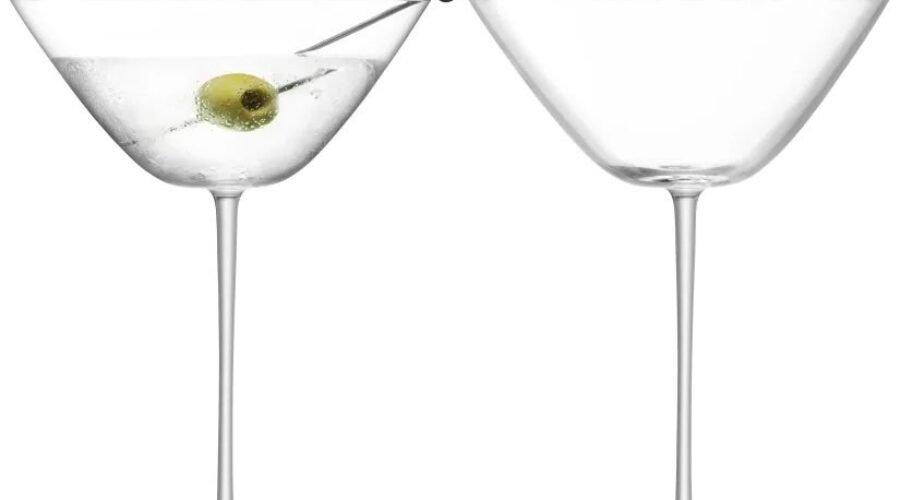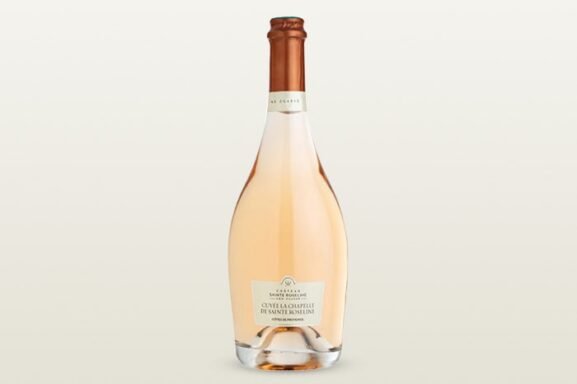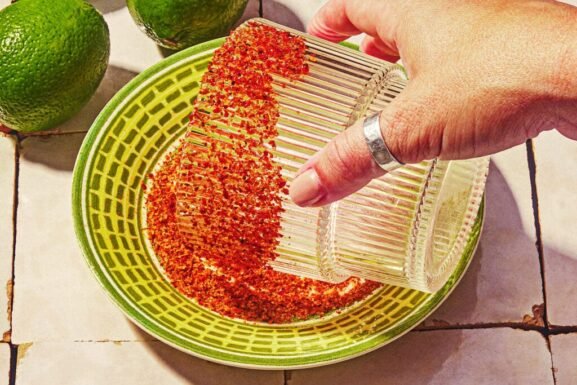Everything Tastes Better in Shakerato Form
There’s only one kind of espresso drink I want to sip from a martini glass, and it’s not the espresso martini.
The first thing I do upon landing in Italy, even before wiping the airplane cookie crumbs off my body, is locate the nearest bar and order myself a caffè shakerato, a chilled, frothy sweetened espresso served in a martini glass. When shaken vigorously, the drink’s three humble ingredients—espresso, ice and sugar—become airy and delicately foamy, an energizing concoction that has no business being as fancy as it feels.
Despite Italian espresso drinks like the cappuccino and macchiato making it big in the States, the shakerato has remained surprisingly under-the-radar—until recently. In fact, the “shakerato” as a format and technique—the word literally just means “shaken” in Italian—is spreading far and wide. Not only has the search for “shakerato” sky-rocketed in Google, hitting an all-time high in July, but “shaken espresso” drinks have even popped up on the menus at Dunkin’ and Starbucks. Do not, however, let them fool you: These milky lattes are as similar to authentic shakerato as Olive Garden spaghetti is to cacio e pepe. True caffè shakerato gets its creaminess from the air.
What’s most exciting to me, as a shakerato zealot, is seeing the drink take off at Italian bars and restaurants, showcasing ingredients beyond just espresso. Americans are catching on to the fact that liquids taste better when they’re fluffed up a little. At the New York aperitivo hotspot Bar Pisellino, the classic caffè shakerato takes its place on the menu alongside its more famous cousins, like the latte and cappuccino and macchiato. In Los Angeles, the Roman-inspired trattoria Bar Bacetti lists its shakerato as a non-alcoholic aperitivo, adding orgeat to the equation for a bit of nuttiness. As cocktail or as coffee drink, the shakerato works.
// Create the element
var script_68716c881ab77 = document.createElement(“script”);
script_68716c881ab77.innerHTML = `
window.googletag = window.googletag || {cmd: []};
googletag.cmd.push(function() {
var adType = “leaderboard”;
var mapping;
var lbmapping = googletag.sizeMapping()
.addSize([1024, 0], [[970, 250], [970, 90], [1, 1], [728, 90]])
.addSize([728, 0], [[728, 90], [1, 1]])
.addSize([320, 0], [[1, 1], [300, 50], [300, 100], [320, 50], [320, 100]])
.addSize([0, 0], [[1, 1], [320, 50]])
.build();; // Size mapping for leaderboard ads
var medrecmapping = googletag.sizeMapping()
.addSize([1024, 0], [[300, 600],[300, 250]])
.addSize([728, 0], [300, 250])
.addSize([320, 0], [[1, 1],[300, 250]])
.addSize([0, 0], [[1, 1], [300, 250]])
.build(); // Size mapping for med rectengle ads
if(‘/39808611/article_page/article_leaderboard_1’ == ‘/39808611/article_page/article_leaderboard_1’
|| ‘/39808611/article_page/article_leaderboard_1’ == ‘/39808611/article_page/article_leaderboard_2’
|| ‘/39808611/article_page/article_leaderboard_1’ == ‘/39808611/article_page/article_leaderboard_3’) {
mapping = googletag.sizeMapping()
.addSize([1920, 0], [[728, 90]]) // >= 1920px
.addSize([1440, 0], [[728, 90]]) // 1440px-1919px
.addSize([730, 0], [[300, 250]]) // 730px-1439px
.addSize([0, 0], [[320, 100], [320, 50], [300, 100], [300, 50], [300, 250]]) // Up to 729px
.build();
} else {
mapping = adType == ‘leaderboard’ ? lbmapping : medrecmapping;
}
googletag.defineSlot(‘/39808611/article_page/article_leaderboard_1’, [],
‘div-gpt-ad-68716c881ab77’).addService(googletag.pubads()).defineSizeMapping(mapping);
googletag.pubads().enableSingleRequest();
googletag.pubads().collapseEmptyDivs();
googletag.display(‘div-gpt-ad-68716c881ab77’);
});
`;
// Append the script to the body
document.body.appendChild(script_68716c881ab77);
Caffè shakerato is the very first thing that Althea Codamon, partner and wine director of newly opened Osteria Radisa in Brooklyn, makes when she gets to her restaurant. She pulls a double espresso, shakes it with 0.5 oz. Demerara syrup and, in a break from Italian tradition, a splash of coconut cream (like Coco Lopez). But her favorite shakerato is the amaro shakerato, easily the most elegant one-ingredient cocktail.
The technique transforms a single liquid—here, amaro—into something entirely new and exciting, all thanks to the physics of vigorous shaking with ice cubes.
“Shakeratos are wonderful because it is a beautiful way to enjoy a neat spirit,” says Jojo Colonna, bar director for the forthcoming New York restaurant I Cavallini. He notes that most bitters and amari are so flavorful that they already function a bit like bottled cocktails, and they don’t need much else to balance them. “Adding some dilution and chill can make them much more palatable and open them to reveal new flavors, providing a more pleasant drinking experience than to just drink it neat at room temperature,” he says.
The Magic of Ice and Sugar
When making amaro shakeratos, Codamon is strategic about her amaro choice, given that it’s the only ingredient. “Amari that are higher in sugar are usually more viscous and create a beautiful foamy head after shaking,” she says. “They’re ideal for shakerato because the dilution balances out the sweetness.”
Codamon acknowledges that Braulio and more herbal options are popular picks for this shakerato, but she loves Sicilian Amari or “ones that have a bitter citrus note like Averna, Sirene ‘Canto’ and Amaro Pellegrino.”
The most important ingredient in any shakerato, however, will always be the ice. “Good, solid ice is the key to getting the perfect froth, dilution and temperature,” says Codamon. “Shake hard, but not too long.”
Colonna echoes this sentiment. “It is always best to use fresh, not wet, ice,” he says. “The bigger the cubes, the better for maximum control over dilution and chill.”
Not only is the shakerato a one-ingredient marvel, but it’s also a template you can play around with.
Colonna put an amaro shakerato riff on the menu at I Cavallini, called the “Shakerato Rickey.” It features the lower-ABV, higher-sugar Braulio—the “wonderfully complex Alpine amaro from Valtellina, Italy”—that, when shaken, “aerates beautifully and creates an amazing crema, much like an espresso.”
// Create the element
var script_68716c881b470 = document.createElement(“script”);
script_68716c881b470.innerHTML = `
window.googletag = window.googletag || {cmd: []};
googletag.cmd.push(function() {
var adType = “leaderboard”;
var mapping;
var lbmapping = googletag.sizeMapping()
.addSize([1024, 0], [[970, 250], [970, 90], [1, 1], [728, 90]])
.addSize([728, 0], [[728, 90], [1, 1]])
.addSize([320, 0], [[1, 1], [300, 50], [300, 100], [320, 50], [320, 100]])
.addSize([0, 0], [[1, 1], [320, 50]])
.build();; // Size mapping for leaderboard ads
var medrecmapping = googletag.sizeMapping()
.addSize([1024, 0], [[300, 600],[300, 250]])
.addSize([728, 0], [300, 250])
.addSize([320, 0], [[1, 1],[300, 250]])
.addSize([0, 0], [[1, 1], [300, 250]])
.build(); // Size mapping for med rectengle ads
if(‘/39808611/article_page/article_leaderboard_2’ == ‘/39808611/article_page/article_leaderboard_1’
|| ‘/39808611/article_page/article_leaderboard_2’ == ‘/39808611/article_page/article_leaderboard_2’
|| ‘/39808611/article_page/article_leaderboard_2’ == ‘/39808611/article_page/article_leaderboard_3’) {
mapping = googletag.sizeMapping()
.addSize([1920, 0], [[728, 90]]) // >= 1920px
.addSize([1440, 0], [[728, 90]]) // 1440px-1919px
.addSize([730, 0], [[300, 250]]) // 730px-1439px
.addSize([0, 0], [[320, 100], [320, 50], [300, 100], [300, 50], [300, 250]]) // Up to 729px
.build();
} else {
mapping = adType == ‘leaderboard’ ? lbmapping : medrecmapping;
}
googletag.defineSlot(‘/39808611/article_page/article_leaderboard_2’, [],
‘div-gpt-ad-68716c881b470’).addService(googletag.pubads()).defineSizeMapping(mapping);
googletag.pubads().enableSingleRequest();
googletag.pubads().collapseEmptyDivs();
googletag.display(‘div-gpt-ad-68716c881b470’);
});
`;
// Append the script to the body
document.body.appendChild(script_68716c881b470);
The concoction becomes a “rickey” due to the addition of soda and fresh lime juice. “Once you add the shaken amaro and add soda, it fluffs up like a soufflé and just looks stunning,” he says.
If you’re interested in both amaro and caffè shakerato, Wine Enthusiast writer-at-large Kara Newman, who reviews spirits and ready-to-drink beverages, points to the canned American Shakerato she tasted last year as “the best of both shakerato worlds.” It’s made with Americano bitter liqueur, Madcap coffee and chocolate and orange bitters. ”The experience is like drinking coffee with a liberal dose of amaro,” she writes in her review.
More Cocktail Coverage:
- This “crushable yet complex” mezcal cocktail is the margarita’s trendy cousin.
- Meet the love child of a spritz and an espresso martini: the Espresso Prosecco.
- In case you hadn’t heard, Sauvignon Blanc’s latest viral moment is the crisp martini.
- Our favorite twists on the classic gimlet that you’ll want to make again and again.
New Arrival
Bar Culture Martini Glasses (Set of 2)
In Stock | $140
The post Everything Tastes Better in Shakerato Form appeared first on Wine Enthusiast.


